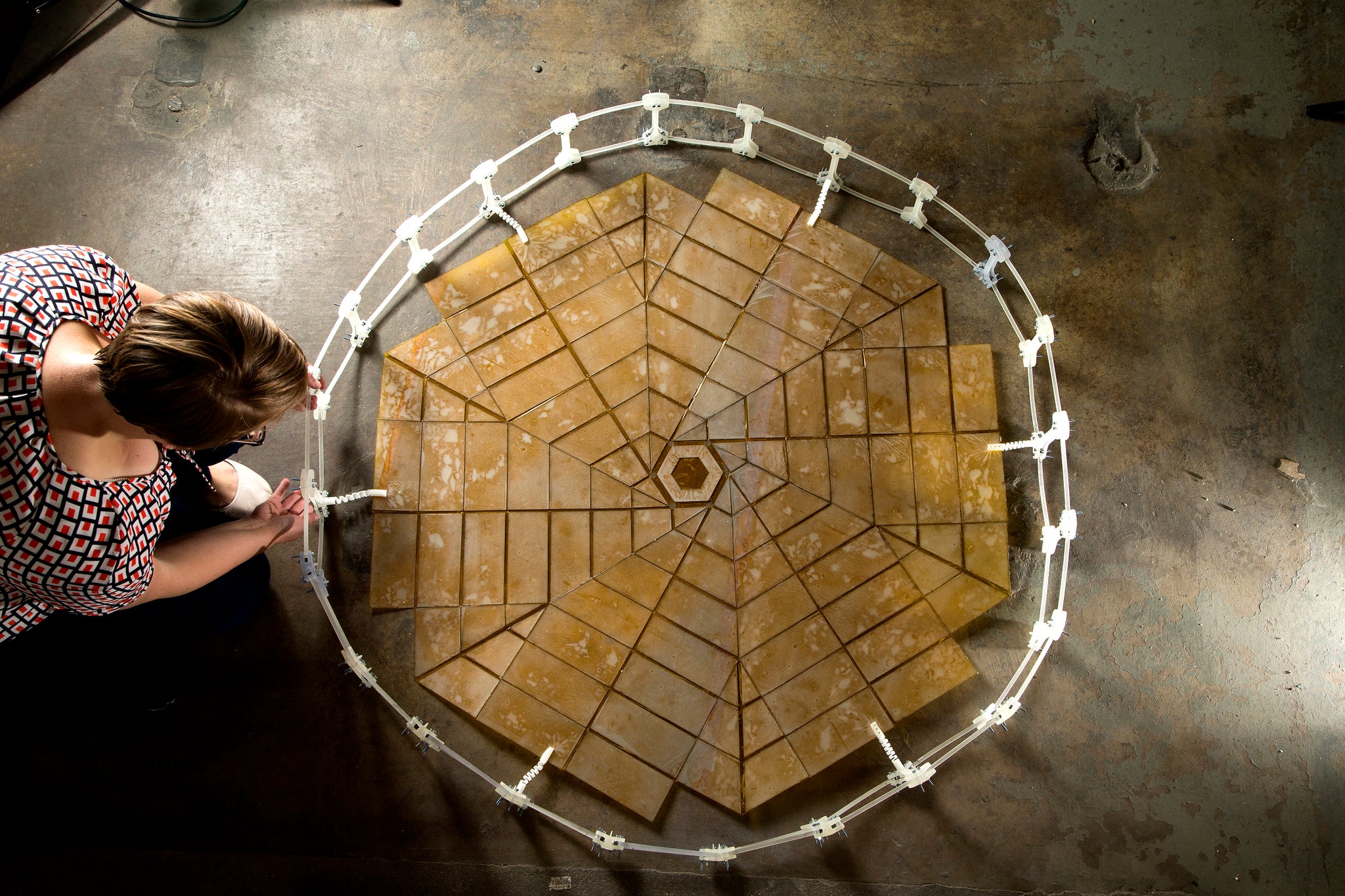Nasa is using origami to fold up 82-foot solar arrays into 9-foot tubes
Origami techniques have been used to create compact components for space since a Japanese astrophysicist created the special 'Miura fold' in 1995

Getting solar panels into space is tricky. The bigger they are the more power they can provide, but as you increase the size you also increase the cost of launching them. So how do scientists get around this problem? Simple: they use origami.
At least, this is what Nasa and researchers at Brigham Young University (BYU) are doing, after creating a new ‘origami-inspired deployable solar array’ that’s only 8.9 feet in diameter when folded up, but a whopping 82 feet wide when extending.
“By using origami principles we can get a much larger array into space by stowing it compactly during launch and then opening it up once we’re in space,” says mechanical engineering PhD student Shannon Zirbel in the video below.
The team have used a combination of different folds to create their array, but were inspired by a method known as the ‘Miura fold’; a mechanism first developed with space-packing in mind by Japanese astrophysicist Koryo Miura in 1995.
There’s a lot of interesting thinking that goes into Miura's technique (origami nerds can click here for more detail) but essentially the lack of right-angled folded corners means that there's less chance of tearing, while any sheet using Mirua folds only has a single degree of freedom – ie, it only has two states, fully open or fully closed.
“Since reversing one fold in the sheet (that is, making a "mountain" into a "valley") requires reversing all of the adjacent folds as well, the Miura sheet feels as though it has a memory, and is very resistant to deformation,” says Lifehacker, quoting one Eric Meltzer.
Subscribe to Independent Premium to bookmark this article
Want to bookmark your favourite articles and stories to read or reference later? Start your Independent Premium subscription today.

Join our commenting forum
Join thought-provoking conversations, follow other Independent readers and see their replies